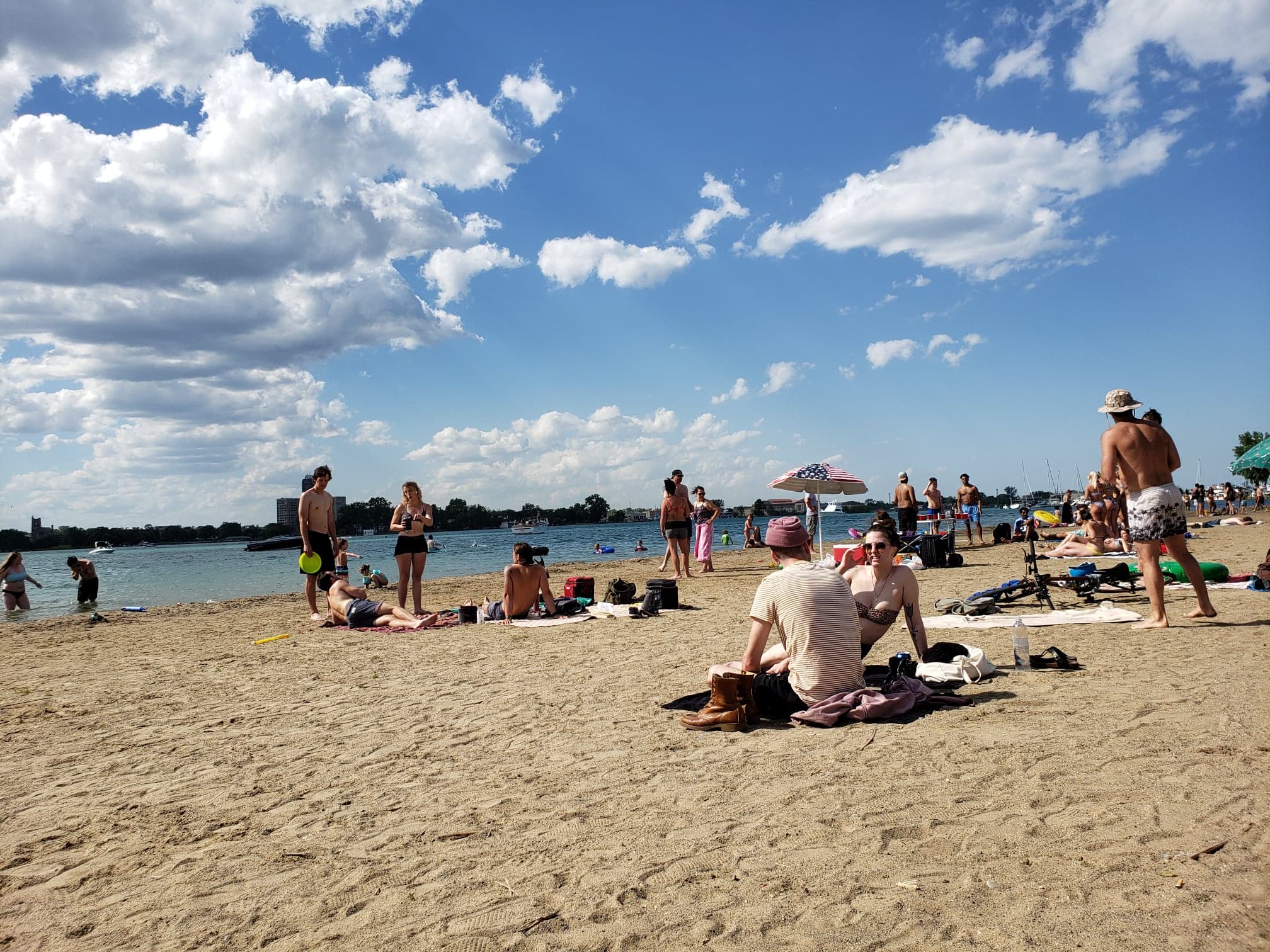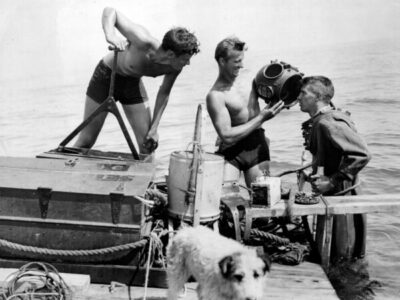
As COVID-19 changed the pattern of life around the Great Lakes region in 2020, it also altered the pattern of Great Lakes drownings in unfortunate if predictable ways.
With larger than normal crowds and a fatigue with restrictions, the rise in drownings isn’t a surprise.
“You get no lifeguards, heavier beach crowds, more people who were just escaping their house in the heat, going to the beach, and you’re putting more people into a dangerous situation,” said Chris Houser, a professor in the school of environment at University of Windsor.
Houser’s research showed that coronavirus precautions such as stay-at-home orders and travel restrictions kept drownings—those associated with waves and currents—well below historic averages.
However, once those restrictions were lifted, drownings far outpaced the average. By seasons end, more people had drowned than the average year in the previous decade
Drownings track with COVID restrictions for some lakes
The increase in drownings didn’t occur evenly across the basin, according to Houser’s research, which was published in Ocean and Coastal Management in February.
By season’s end, Lake Michigan, Lake Ontario and Lake Huron had 14, 11 and four more drownings than the average from previous years respectively. Lake Erie showed no change and Lake Superior was below the historical average.
In Lake Michigan, the rate of drowning deaths increased as COVID-19 restrictions were lifted in Michigan, Indiana and Illinois throughout June and early July. Before restrictions were lifted, drownings in the lake were below the historic average.
In Lake Ontario, they accelerated after Ontario moved to phase two of its coronavirus restrictions, which allowed beaches to open.
“The moment that you see the stay-at-home orders being lifted for Ontario, for Michigan, Indiana, Illinois, that’s when you started to see the really fast increases in the number of drownings,” Houser said. But it’s a pattern that didn’t hold true for every lake.
Houser and his research partner suggest that the increase was due to larger than normal crowds and fewer lifeguards on duty. As families and individuals abandoned plans to travel farther afield, they may have turned to local beaches.
“As stay-at-home orders are lifted, people will go to their local beach, and they’ll take that opportunity to go swimming, to do something other than what they lost when it came to no vacations,” Houser said.
Lake Huron, the other lake that saw an increase in drownings, didn’t closely follow the lifting of restrictions, but a late surge in drownings may have coincided with a greater loosening of restrictions, Houser said. Lake Huron also lacks densely populated cities like Toronto and Chicago on lakes Ontario and Michigan, which fueled large crowds there.
“There weren’t more rips or stronger currents. Just more people,” Houser said. “More people will translate to more rescues, more drownings.”
The findings are statistically significant—meaning they most likely aren’t part of the natural difference from year to year—but don’t prove specific reasons for the increase. Aside from crowded beaches, the researchers suggest other COVID-19-related factors may have been at play, too.
Cancelled swimming lessons and closed pools could mean 2020’s beachgoers were less experienced in the water and not used to the lakes’ waves and currents.
Higher water levels meant less beach, and social distancing may have pushed swimmers farther down the beach away from designated swimming areas into more dangerous water and farther from help.
COVID-19 also meant fewer lifeguards.
Lacking in lifeguards
“Lifeguards are the gold standard of water safety, water rescue and drowning prevention,” said Dave Benjamin, the executive director of Great Lakes Surf Rescue Project, a water safety advocacy group. Great Lakes Surf Rescue Project collects and makes public a record of drownings in the Great Lakes. Houser used it in his research.
Regardless of the impact of COVID-19, drownings were too high this year because they are too high every year, Benjamin said.
“This is about 99.9% preventable,” Benjamin said.
Lifeguards can prevent people from getting into dangerous situations and respond quicker than other emergency responders. Alongside updated signage, 911 call boxes and rescue equipment, they could dramatically reduce the number of drownings, Benjamin said.
Lifeguards are on duty at Indiana’s only state park on Lake Michigan because the south shore of Lake Michigan is a dynamic place and prone to rip currents, said Ginger Murphy, the deputy director for stewardship at Indiana State Parks.
The park saw larger than normal crowds in 2020.
The Great Lakes Surf Rescue Project recorded one drowning at Indiana Dunes State Park. It occurred in the morning, before lifeguards were on duty. Later in the season, swimming was shut down because of COVID-19-related staffing issues with lifeguards.
Many beaches are without lifeguards altogether.
Michigan state parks have been without lifeguards since 1993, said Ron Olson, chief of Parks and Recreation for the Michigan Department of Parks and Recreation. There are no plans to bring lifeguards back.
There were three drownings at Michigan state parks between Memorial Day and Labor Day in 2020, according to data from the Great Lakes Surf Rescue Project.
Michigan state parks saw a 25% increase in visitors in 2020 and “expect this year to be just as busy,” Olson said.
Efforts to improve safety and awareness have occurred at several parks, including Holland State Park in Holland, Michigan, where two drownings occurred in the 2020 swimming season. A new gate to keep people off the breakwater in dangerous conditions, a clearer loudspeaker system and improved signage will be in effect for the 2021 season, Olson said.
The improvements are aimed at helping visitors better navigate the beaches on their own.
“We’re just trying to tell people to take personal responsibility,” Olson said.
Catch more news on Great Lakes Now:
Duck Stamp: Little stamp has big impacts in the Great Lakes and nationwide
Scientists Concerned About the Bottom of the Food Web in the Great Lakes
Bolder Fish: New study looks at how pandemic antidepressant use might affect freshwater ecosystems
API key not valid. Please pass a valid API key.Featured image: Belle Isle beach (Photo by Natasha Blakely)




